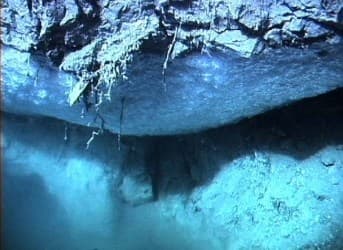America’s ethanol mandate under fire for jumping the gun; Obama prepares to announce a $2 billion “oil-pays-for-clean-car-research” plan; Japan storms international scene with methane hydrate mining; crude market movements show a bit of pessimism this week; and what to expect from this week’s Oil & Energy Insider ….
Consumer groups are up in arms over the ethanol mandate, and while confusion reigns over how this is going to work, increasingly the consensus seems to be that America isn’t ready for this. According to Pike Research, the biofuels mandate is now vulnerable to renewed political pressure as the drawbacks of conventionally-produced corn-based biofuels in the US are becoming more apparent while biofuels production has failed to advance as much as predicted previously.
The first indication that the pressure is increasing came in January, when a Federal appeals court rejected the Environmental Protection Agency’s (EPA) cellulosic ethanol requirement because they weren’t convinced that refiners could meet these obligations. Since late last year, the pressure to reverse the mandate has been intensifying, though the EPA has so far held fast. The EPA’s approval of E15—a 15% ethanol / 75% gasoline blend—is facing challenges, too, with two new bills in Congress seeking its delay or an all-out ban until we know more. Right now, most biofuels blends that Americans put in their cars are 10% ethanol, but even this level has not been approved for all vehicles across the board, and questions remain over greenhouse gas emissions, fuel efficiency and engine degradation, among other things. (Read more about this on our website).
We should also see some more news out of Washington this weekend about plans to finance clean energy programs. Though it hadn’t happened by the time of writing, on Friday Obama was expected to announce more details on his latest proposal to the pubic: diverting $2 billion in revenues from federal oil and gas leases over the next decade to fund research on “advanced vehicles”. We can expect some significant resistance to this from Republicans in Congress who essentially view this strategy as a way of taxing energy producers. (Though this is by no means a novel idea and the Republicans themselves have toyed with it in previous administrations). For clean energy, though, the strategy has become more urgent due to the sequester, which could see budget cuts cancel new research programs for up to two years.
While it’s all about renewables this week in the US, the big news in Japan is the first-ever successful mining of methane hydrates—an extremely expensive undertaking, but one that could supply Japan with decades worth of unconventional natural gas supplies. Japan is hoping to commercialize methane hydrates by 2018, thereby starting a methane hydrate snowball effect across Asia. Methane hydrates are methane gases trapped in a crystalized water structure rendering it an icy-like solid. Japan is tapping into them on the floor of the Sea of Japan. For now, it’s not nearly as viable as shale gas, but as Japan doesn’t have any fossil fuel resources, the future may indeed be methane hydrate. The week after next we’ll provide subscribers with an in-depth look at methane hydrates, exploitation potential and commercial viability prospects in our premium newsletter, Oil & Energy Insider.
Crude market movements this week were pessimistic, seeing oil prices decline in Asia after the International Energy Agency (IEA) lowered its global demand forecast for the second straight month, citing uncertainty over US budget talks. The US Department of Energy released supply data showing that stockpiles had risen 2.6 million barrels in the week ending 8 March. The IEA estimated that demand for oil would total 90.6 million barrels per day for 2013--60,000 barrels lower than its February forecast. On Thursday, New York's main contract, light sweet crude for delivery in April dropped 25 cents to $92.27 a barrel and Brent North Sea crude for April delivery shed 29 cents to $108.23.
Be sure to get in our premium newsletter this week—Oil & Energy Insider—as trader Dan Dicker unveils his latest hot picks, and we detail the myriad opportunities in the subsea sector in the first of a two-part series. Also be sure to take advantage of the additional special report we issued on 14 March to subscribers: 8 Megatrends Defining the Oil & Gas Industry.


















